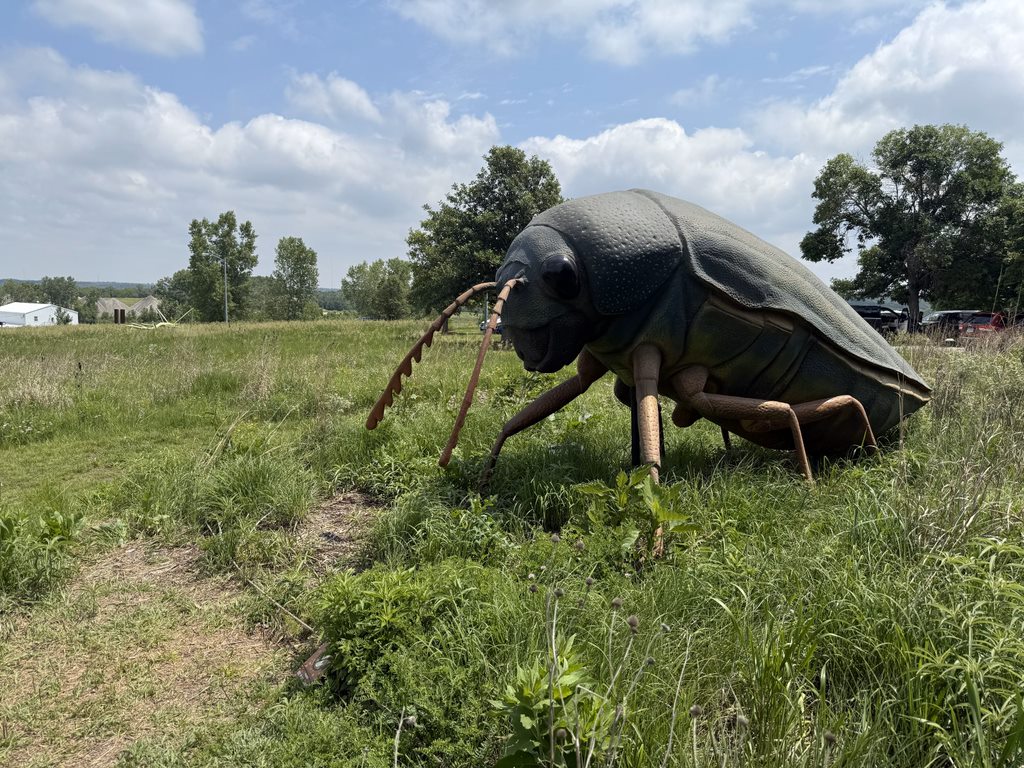- Introduction to the Insect Adventure Exhibit
- Educational Value of the Exhibit
- Conservation Efforts Highlighted in the Exhibit
- Visitor Experience and Interactive Elements
- Importance of Insects in Ecosystems
The Wildlife Safari Park has taken a bold leap into the enchanting world of insects with its newly opened Insect Adventure exhibit. This attraction features a collection of 35 oversized animatronic insects and spiders from various biomes around the globe. Each figure not only delights with its astonishing scale but also educates visitors about the roles these creatures play in their ecosystems.
The exhibit is not just an artistic interpretation; it immerses guests in the diversity of insects, capturing both their beauty and their critical importance to our planet. From the industrious honeybee, known for its role in pollination, to the formidable bullet ant, renowned for its painful sting, this exhibit offers a fascinating look into the insect realm. Visitors can marvel at these giant models, which provide a unique chance to appreciate their intricate structures and behaviors without the fear associated with real-life encounters.
One of the key educational aspects of the Insect Adventure exhibit is its focus on the various roles insects play in different ecosystems. Insects are among the most diverse groups of organisms on Earth. The exhibit highlights their contributions to food webs, nutrient cycling, and pollination of plants. Without insects, many plants could not reproduce, significantly impacting food supplies and ecological balance.
The honeybee, for example, is crucial for food resources. Estimates suggest that bees contribute to the pollination of approximately one-third of the food we consume, including fruits, vegetables, and nuts. The exhibit explores this connection, providing visitors insight into the vital importance of bees and the threats they currently face, such as habitat loss and pesticide exposure.
In addition to educational components, the Wildlife Safari Park places an emphasis on conservation within the exhibit. By showcasing the challenges faced by insect populations globally, visitors learn about declining numbers due to climate change, pesticide use, and habitat destruction. This educational opportunity serves to inspire a sense of responsibility towards protecting these ecosystems.
The exhibit also aligns with ongoing conservation efforts within the Wildlife Safari Park. Through its various projects and programs, the park seeks to rehabilitate and protect insect habitats and educate the public about ecological balance. Emphasizing the importance of environmental stewardship, the Insect Adventure encourages visitors to reflect on their roles in conservation efforts and the steps they can take in their everyday lives to support insect preservation.
The visitor experience is designed to be interactive and engaging, making education enjoyable. Guests are invited to embark on a self-guided journey, immersing themselves in an atmosphere alive with buzz and activity. The scale of the animatronic creatures provides an impressive visual display that captures the imagination. Accompanying information panels next to each exhibit complement the visual experience, detailing the life cycles, behaviors, and ecological roles of the displayed insects.
Interactive elements have been incorporated into the exhibit to enhance learning. These can include touch screens featuring quizzes about insect facts or activities that involve identifying different species. For families, the exhibit offers structured scavenger hunts, where children can seek various insects and learn intriguing facts along the way. These elements engage children and adults alike, fostering a sense of exploration and curiosity.
Insects are often misunderstood and dismissed, being labeled as pests or nuisances. The Insect Adventure serves to change this narrative. It offers a space where visitors can confront their misconceptions and fears while gaining appreciation for these essential creatures. This type of engagement is key to fostering a broader understanding and appreciation of biodiversity.
Beyond the visual splendor of the animatronic sculptures, the exhibit emphasizes a scientific approach. It intertwines fun with learning, allowing visitors to grasp the concepts of entomology—the study of insects. Educational workshops or guided tours led by knowledgeable staff can also deepen understanding. Such programs are designed to showcase the complexities of insect behavior, anatomy, and their contributions to human life.
Another significant aspect is the focus on insect diversity. The exhibit features creatures from different geographic areas, showcasing their adaptations to various environments. Visitors can see how insects like the terrifying mantis, native to jungles and forests, contrast with desert-dwelling beetles. Each insect’s adaptations are thoughtfully presented, giving visitors an insight into evolutionary biology—the process by which species change over time.
This focus on adaptation is crucial as it leads to a deeper discussion about the impacts of climate change on insect populations. Changes in temperature and habitat can dramatically affect insect life cycles. Educating the public about these issues, and the role they play, can stimulate conversations about sustainability practices and how each individual can contribute to local ecosystems.
The importance of insects extends to their roles within the environment. Insects are key to decomposition, breaking down organic matter and recycling nutrients back into the soil. This function is critical for maintaining soil health, which directly affects agriculture and plant growth. The Insect Adventure shed light on these functions, explaining how insects facilitate nutrient cycling, essential for ecosystem stability.
Through engaging displays and informative content, the Wildlife Safari Park and its Insect Adventure exhibit provide a crucial educational service. They shine a light on the often-overlooked world of insects, illustrating their significance and encouraging visitors to appreciate and respect these creatures.
As the exhibit continues to welcome visitors, it serves as a hub for community engagement and scientific learning. Families visiting the park can leave with a newfound respect for insects. Programs that promote citizen science, such as butterfly counts or pollinator gardens, may evolve from this exhibit, helping to engage locals in conservation efforts actively.
In summary, the Insect Adventure at Wildlife Safari Park enriches the visitor experience by merging education with fun. As families engage with these larger-than-life animatronic insects, they not only learn about the diversity and significance of these creatures but also understand their roles in ecosystems. This innovative exhibit stands as a vital reminder of the importance of insects and their conservation in our increasingly fragile environment. Embracing such initiatives ensures that future generations will cherish and protect these creatures, preserving the intricate web of life they help support.
*****
Source Description
Have You Experienced Our Newest Wild Encounter at Wildlife Safari Park?
Insect Adventure is now open and it’s giant!
Embark on a self-guided journey through a world of 35 larger-than-life animatronic insects and spiders from across the globe. From the buzzing of busy honeybees to the intimidating sting of the bullet ant, this immersive exhibit is crawling with excitement!
Get up close (but not too close!) to these supersized creatures and discover the wild wonders of the insect world like never before.
📍 Now open at Wildlife Safari Park. Don’t miss your chance to experience the biggest little adventure of the season!
Visit Now: https://www.wildlifesafaripark.com/insectadventure

